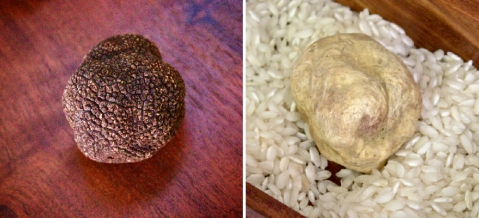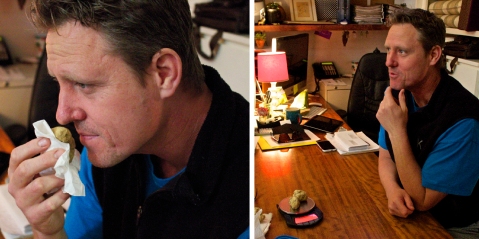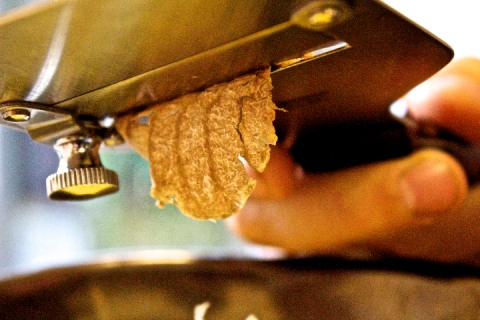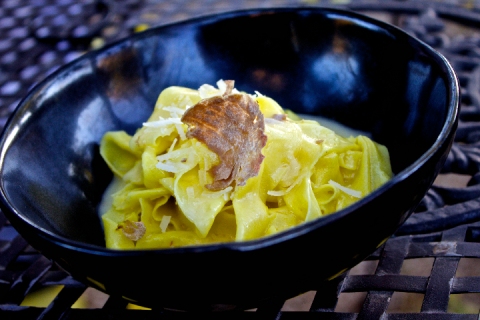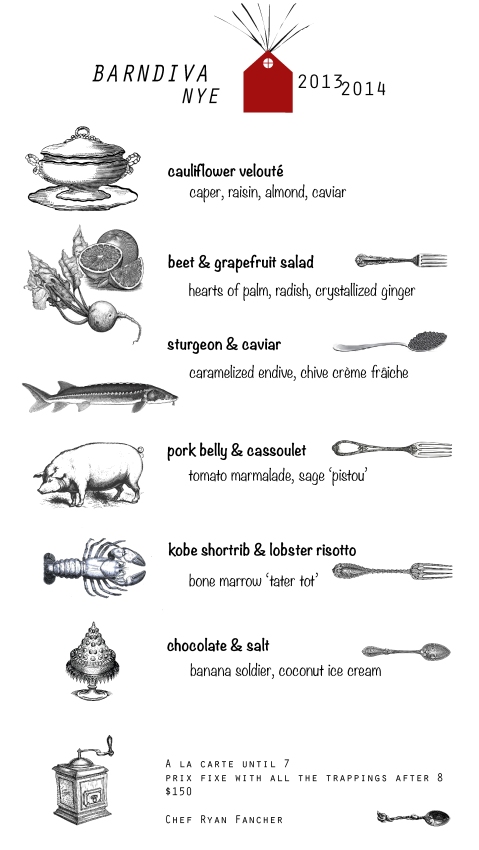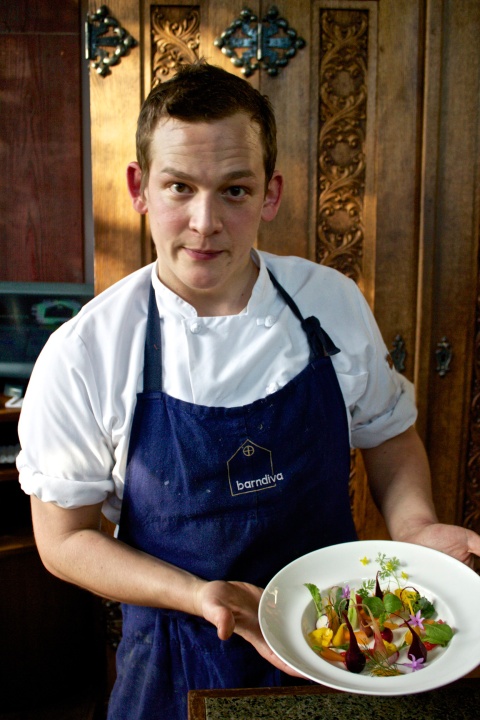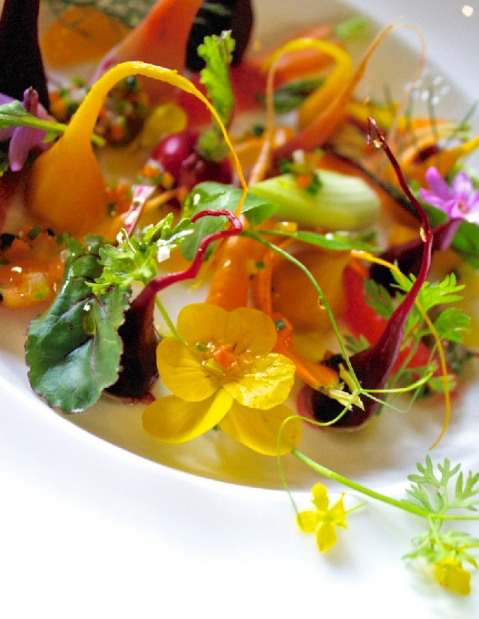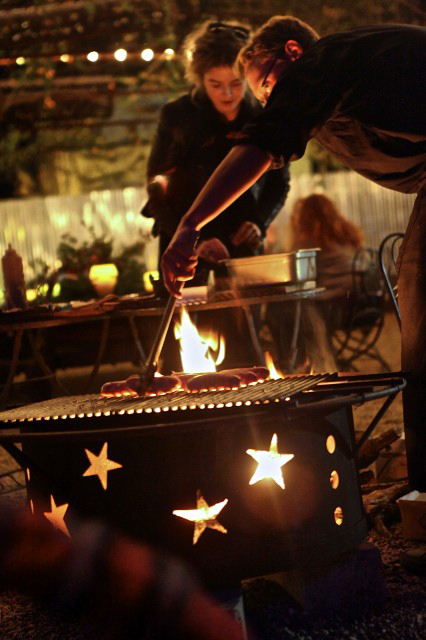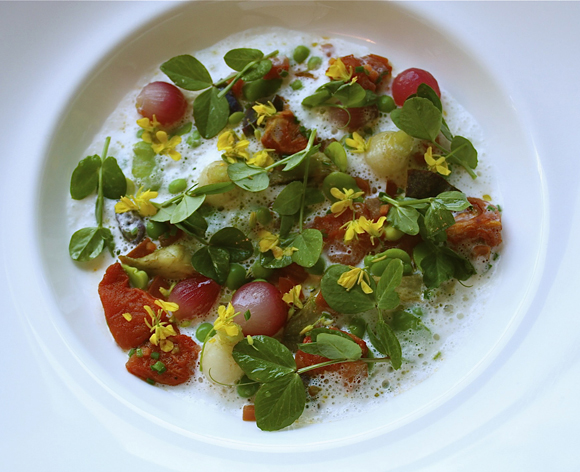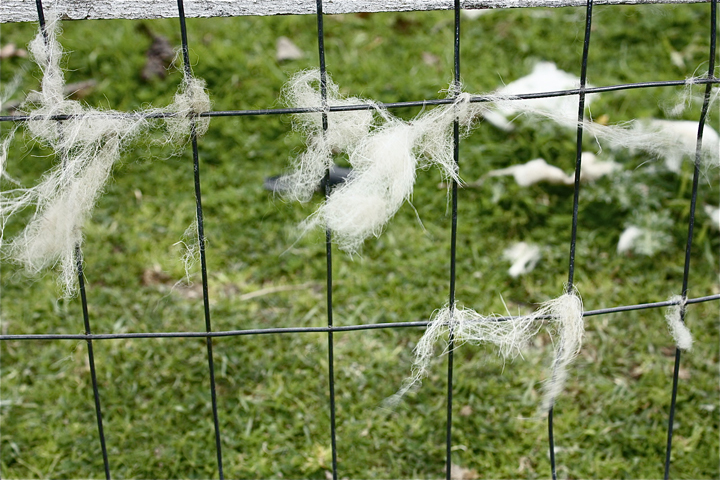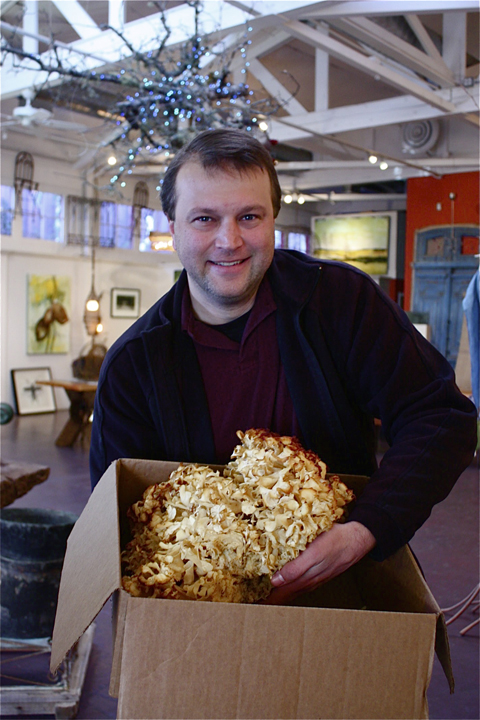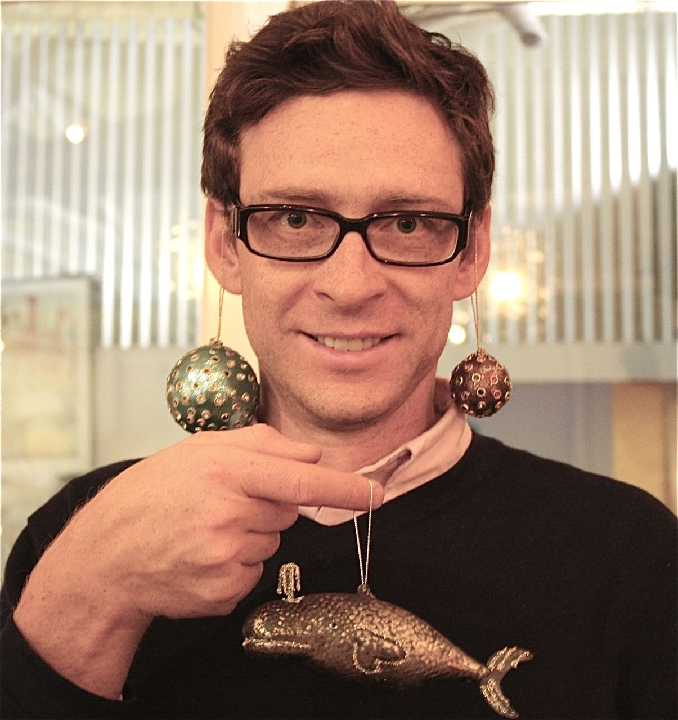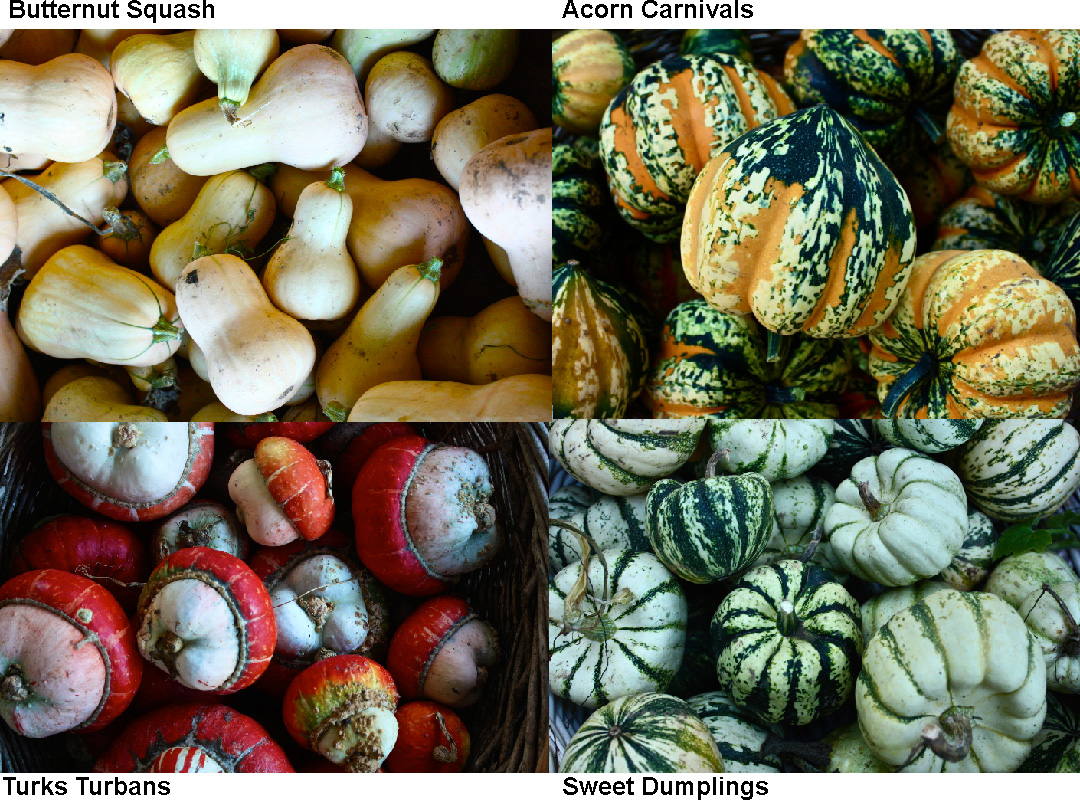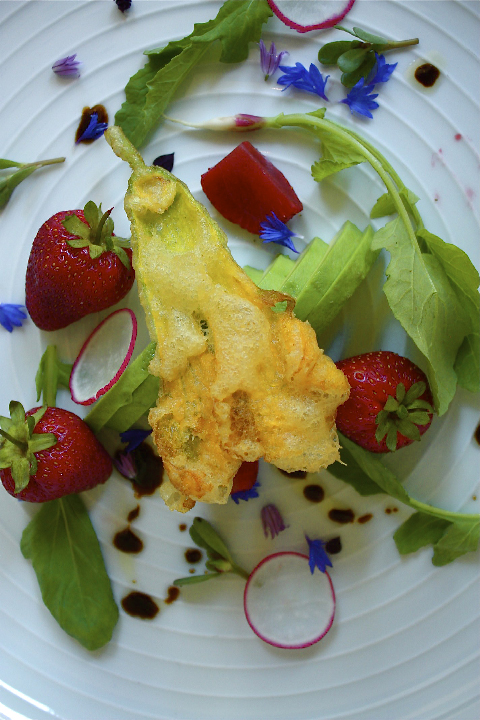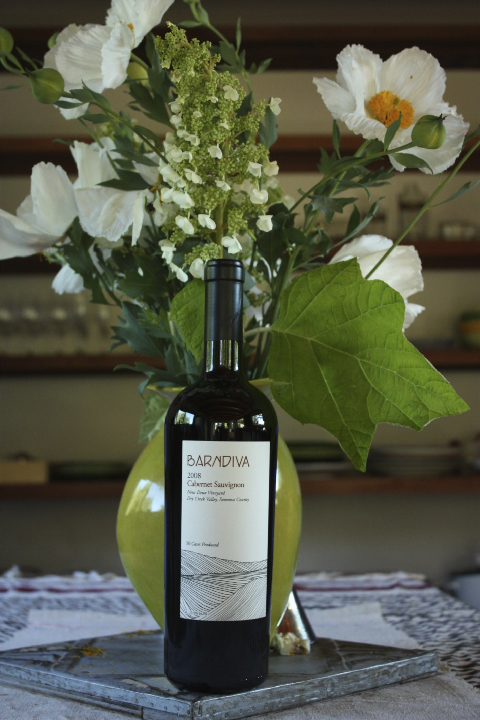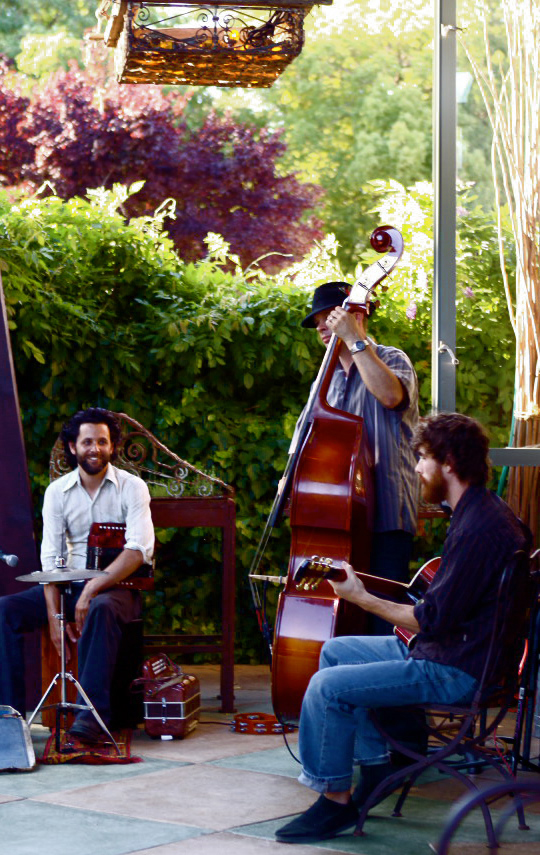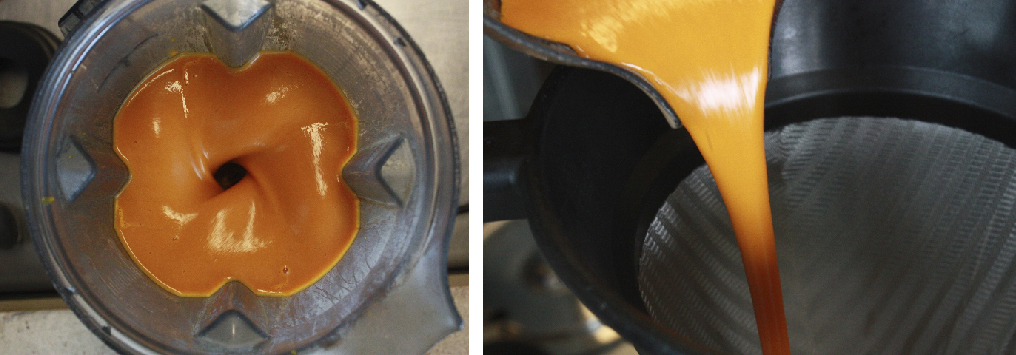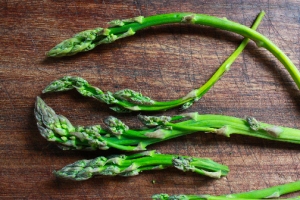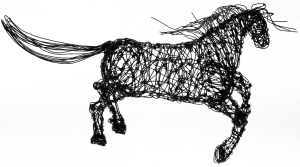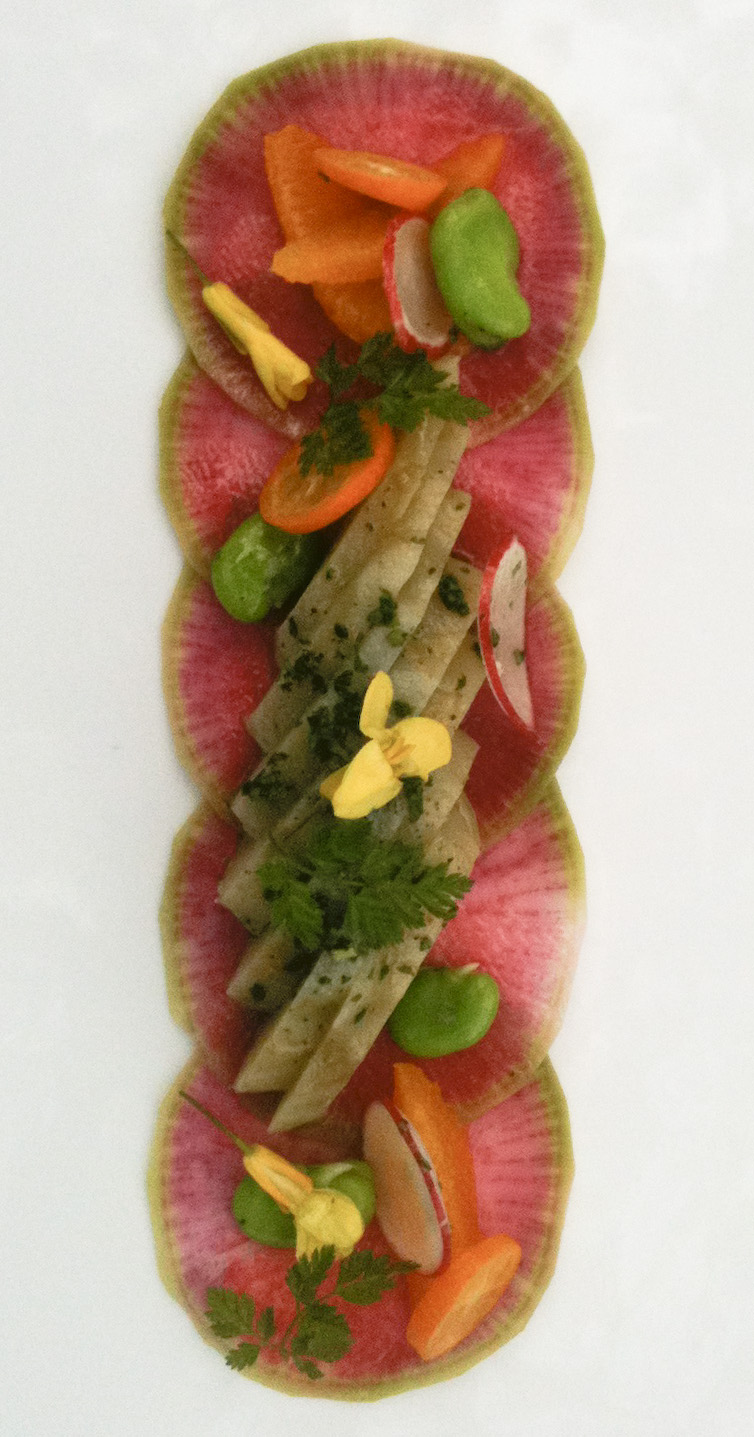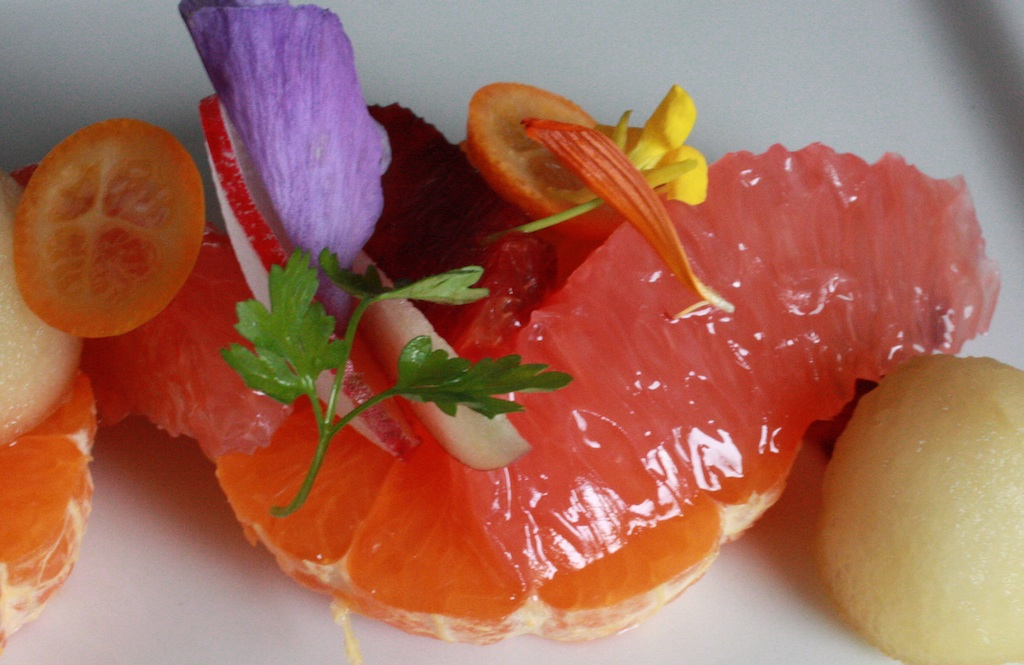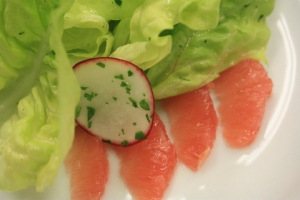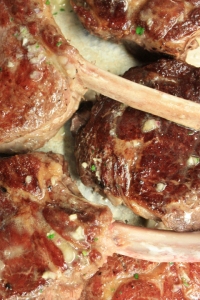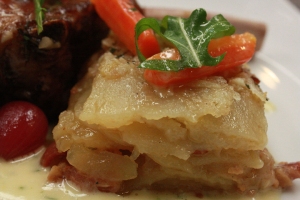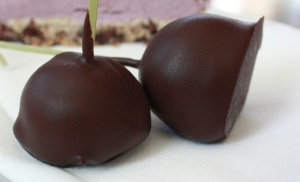
Dish of the Week:
Sautéed Fresh Cèpes with Early Summer Vegetables

Thursday afternoon on my way to water the thyme and basil I found Tommy and Chef Ryan sitting quietly on the back patio looking into a plain brown box, smiling like kids in a candy shop. The box was filled with cèpes.
Fresh cèpes will do that to you, whether or not they bring to mind the dancing mushrooms in Fantasia. The thing is, while there is something undeniably funny about their shape they are also one of the most sensual taste experiences around, one of the few that offers an Umami satisfaction that truly rivals beef. Funny, sexy, can't be domesticated ~ fresh cèpes are the Gerard Depardieu of the mushroom world. Who needs Brad Pitt ~ sorry, I mean steak ~ when you get wild cèpes in season?
 Cèpes, also known as Porcini, belong to the fungi genus Boletus. Instead of gills they have stems (technically known as stipes) that start by enveloping a sympathetic tree's underground root system, encouraging the production of “fruit” that eventually pops up above ground a short distance away from the host trees in summer and fall. In years when a lot of rain is followed by intense heat, cèpes proliferate in the needle dense deciduous forests that run along the western seaboard. Because they are easily recognizable they are perfect mushrooms for beginning foragers.
Cèpes, also known as Porcini, belong to the fungi genus Boletus. Instead of gills they have stems (technically known as stipes) that start by enveloping a sympathetic tree's underground root system, encouraging the production of “fruit” that eventually pops up above ground a short distance away from the host trees in summer and fall. In years when a lot of rain is followed by intense heat, cèpes proliferate in the needle dense deciduous forests that run along the western seaboard. Because they are easily recognizable they are perfect mushrooms for beginning foragers.
The spore print ~ which is how mycologists and budding mushroom hunters refer to the color and pattern of the cap ~ is fawn brown, growing darker the older the mushroom is. Don’t be dissuaded from eating them if you see a bit of green under the surface of the cap as this too is just a sign of maturity.
While dried cèpes are wonderful, deepening in flavor when reconstituted in a little warm water, if you are lucky enough to get them fresh ~ our cèpes this week hailed from Oregon ~ you really don’t want to mess with them too much. Chef choose to make an elegant, simple starter studded with root vegetables because, in his words, "These guys are all about the earth." He sautèed them first in VOO, adding butter with finely minced shallots and garlic confit. Tokyo white turnips from Earlybirds Place, favas from Big Dream Ranch, and freshly shucked English peas came next, followed by chive flowers from the Studio garden. He finished the dish with a drizzle of VOO, a splash of Balsamic, and a generous (and crucial) sprinkling of Maldon Salt.
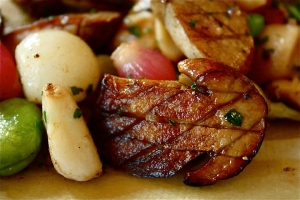 If the cèpes you are using are particularly large, they can be finished in the oven which will ensure the white flesh, thick and firm when young, does not become tough. For Chef, the addition of a few pickled baby red onions provided an essential contrapuntal vinegar note he felt was needed to balance the intense richness of the cèpes.
If the cèpes you are using are particularly large, they can be finished in the oven which will ensure the white flesh, thick and firm when young, does not become tough. For Chef, the addition of a few pickled baby red onions provided an essential contrapuntal vinegar note he felt was needed to balance the intense richness of the cèpes.
 A quintessential Ryan moment occurred as we stood over the stove just before he began to plate. “Take a look in here,” he said, staring into the blackened skillet, “if you don’t love everything you see right now, we can’t be friends.”
A quintessential Ryan moment occurred as we stood over the stove just before he began to plate. “Take a look in here,” he said, staring into the blackened skillet, “if you don’t love everything you see right now, we can’t be friends.”
It didn’t take eating the dish (though I did, sighing happily throughout) to think “Well, thankfully we are.” But it didn’t hurt either.

Love was in the air on Father's Day
I'm an unrepentant romantic when it comes to falling in love, but I've always been pretty pragmatic when it comes to what it takes to keep love going, beginning with the supposition that most human beings don’t start out with an innate instinct to nurture and protect any life other than their own. Love is something we choose to experience, but that’s just the first step. To become good at it, we need to practice. A lot. Which to my mind takes time, effort, and no small degree of sacrifice.
Walking through the dining room on Sunday to the gardens, where two of our three kids waited to celebrate Father's Day with Geoffrey, I couldn't help but be reminded that while love is a test everyday (and to this extent a self-fulfilling prophecy) if anything that's all the more reason to celebrate the fruits of our labor whenever we get the chance. Happily, some of our favorite fathers came to Barndiva to do just that.

David and Rhys (Brush Salon)

Ari and Serafina (Scopa Restaurant) Dawid and Miko (Studio Barndiva)

Albert and Mario Lukka Jovel Emily and Ruby with dad Aaron
 Lukka, Geoff, Isabel and I want to thank the families who chose to share their Father’s Day celebrations with us…with a very special shout out to Debbi and Albert Jovel, married by Lukka in the Barndiva gardens three years ago, who surprised us on Sunday with their beautiful new baby son ~ Mario Lukka Jovel (no kidding).
Lukka, Geoff, Isabel and I want to thank the families who chose to share their Father’s Day celebrations with us…with a very special shout out to Debbi and Albert Jovel, married by Lukka in the Barndiva gardens three years ago, who surprised us on Sunday with their beautiful new baby son ~ Mario Lukka Jovel (no kidding).
Talk about food memories that make you smile. It's days like Sunday that make everything we do here at Barndiva oh so very worthwhile.
In the Fields with Friends

These are the favas used in this week’s Dish, and the beautiful lady holding them is our great friend Kristee Rosendahl, who along with her partner Matt owns Big Dream Ranch, 300 fertile acres beyond Lake Sonoma. As some of you may remember, Kristee was instrumental in helping create the complicated tech aspects of Fork & Shovel…using a breadth of skills she’s now applied to what we think is the most beautiful gardening site on the web. Smart Gardener comprehensively enables you to personalize a garden plan with multiple applications that lets you choose what to plant, and how to manage, harvest, and even shop for and share your organic vegetable garden. Partnering with seed companies like Peaceful Valley Farm Supply and Baker Creek Heirloom Seeds ~ the site already has over 700 organic, GMO free heirloom and exotic seeds ~ it will be expanded soon to include a number of wonderful community networking uses, Signature Gardens (Barndiva’s will be one), books, articles, recipes ~ really there is nothing around farm to table Kristee promises this site won’t eventually do.
We hope you’ll take this opportunity to become one of its first members (free to join!) and grow with it as your (possibly first) garden grows around you. We are so proud of Kristee and what she’s accomplished. Check out Smart Gardener and pass this link on to anyone you know who cares about what they eat and wants to expand their definition of local to include... their own backyard.
Read what Peaceful Valley Farm Supply had to say about Kristee and Smart Gardener.

All text Jil Hales. All photos, Jil Hales (unless otherwise noted)









